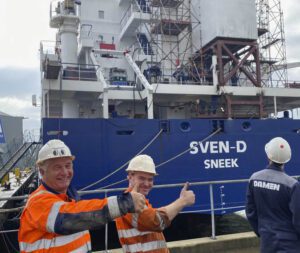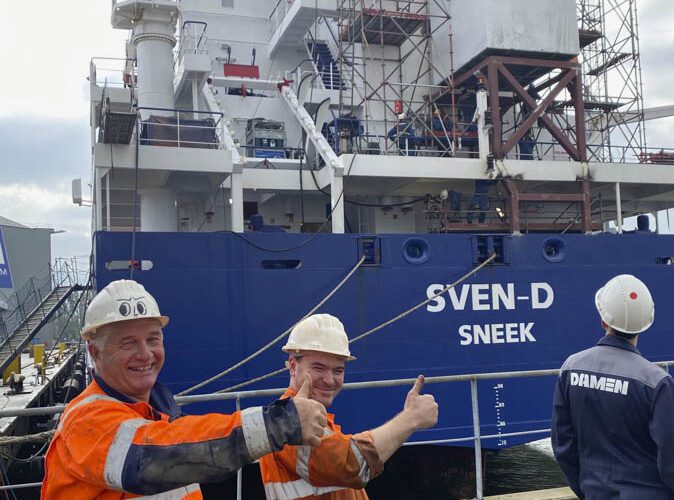(ROTTERDAM, Netherlands) — The American Bureau of Shipping (ABS) has granted approval in principle (AIP) to Value Maritime for its carbon capture system on seagoing vessels. The Filtree system – a prefabricated gas cleaning system that filters sulfur and 99 percent of particulate matter – includes a carbon capture module that captures the CO2 on board in a battery container.
The AIP confirms Value Maritime’s carbon capture system is compliant with ABS’s rules for building and classing marine vessels and its requirements for onboard carbon capture and storage (CCS).
Value Maritime’s CCS technology allows vessels to capture up to 40 percent of CO2 emissions, with the potential of exceeding 90 percent in the future.
“Carbon capture on board is a critical technology in the industry’s push for net zero. We are proud to be able to use our experience to support innovative ideas like Value Maritime’s Filtree system that gives clients more options in the marketplace. The Filtree system follows ABS onboard carbon capture requirements and promises to materially advance the adoption of this technology at sea,” said John McDonald, ABS executive vice president and chief operating officer.
“Carbon Capture on board ships has always made sense to us. We just needed to figure out the most efficient way of making it happen. Thanks to ABS’s approval in principle for our carbon capture system, we can share our latest green technology with the existing shipping fleet and newbuild market,” said Christiaan Nijst, co-founder and director of Value Maritime.
Clean carbon circle
The Filtree system has already been installed on over 20 vessels. The system is set to be installed on the newbuild container vessels of Nordic that are operated by BG Freight Line and which will additionally feature the modular CO2 capture and storage system. This technology captures CO2 from exhaust emissions and uses it to charge a “CO2 battery,” where it is stored and transported to shore. On shore, the CO2 is discharged for use, for example, in the agricultural industry, after which the battery is returned to the vessel to be recharged, thus representing a 100 percent circular solution.
– Value Maritime


